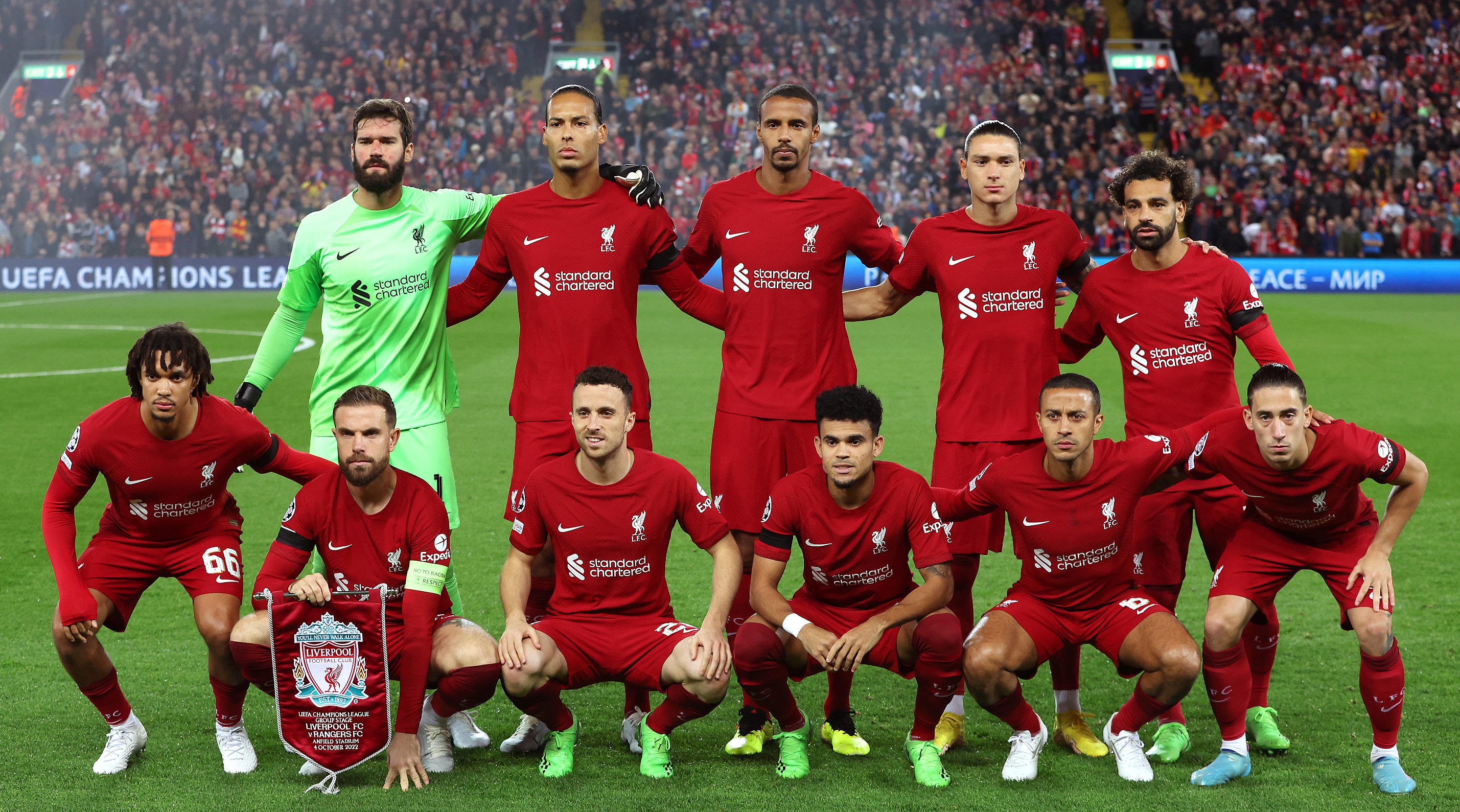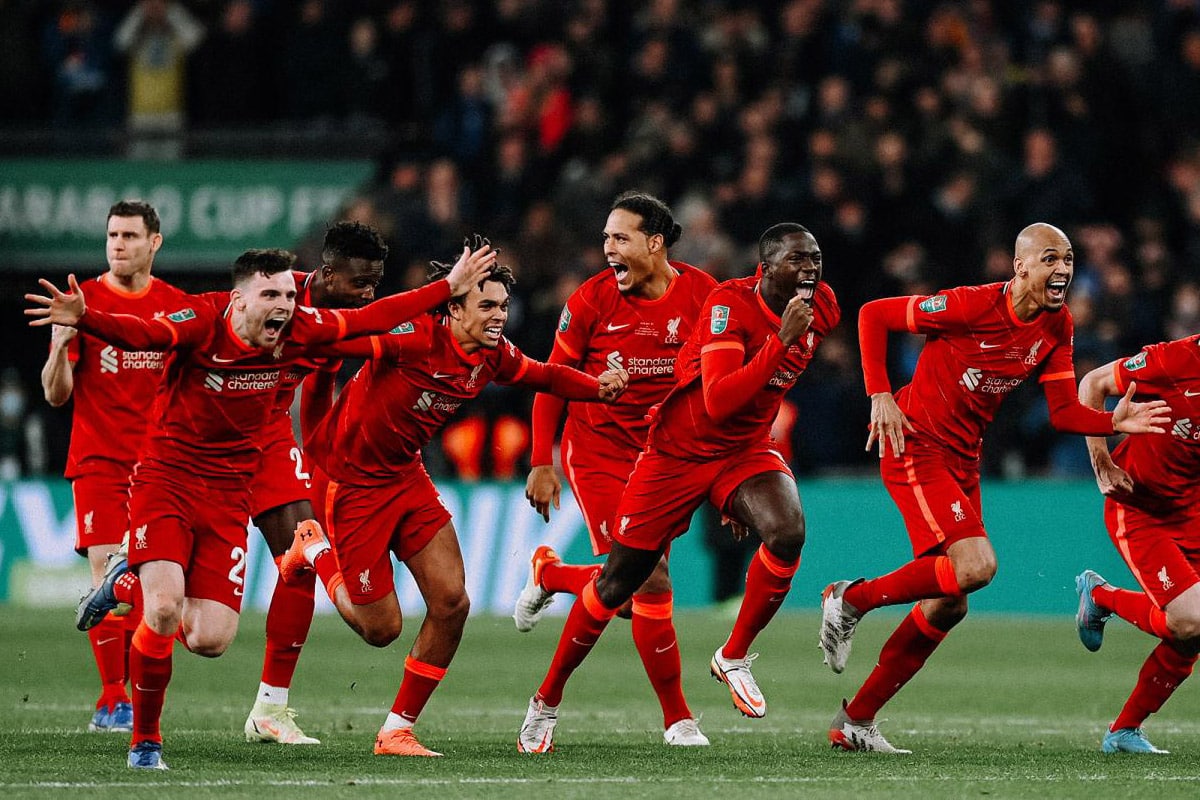Squad Liverpool’s performance this season has been a rollercoaster, marked by periods of brilliance and frustrating inconsistency. From key player acquisitions and departures to tactical shifts and evolving team dynamics, the Reds’ journey has provided ample fodder for analysis. This in-depth review delves into the squad’s history, current composition, individual player performances, tactical approaches, and overall team spirit, providing a comprehensive assessment of Liverpool’s season.
We examine the evolution of the squad over the past five years, tracing managerial changes and highlighting the impact of both established stars and academy graduates. A detailed breakdown of the current squad’s strengths and weaknesses, coupled with an analysis of their tactical flexibility, paints a picture of their current standing. Finally, we explore the dynamics within the squad, considering the interplay between team spirit and individual performances.
Liverpool Squad Evolution: A Five-Year Overview
Liverpool’s squad has undergone significant transformation over the past five years, marked by key player transfers, managerial changes, and fluctuating on-field success. This analysis details the evolution of the squad, highlighting its strengths, weaknesses, and tactical adaptations.
Liverpool Squad History: 2019-2024
The following table details key player movements and managerial changes over the past five seasons. Note that this represents a simplified overview and does not include every transfer.
| Season | Key Additions | Key Departures | Manager |
|---|---|---|---|
| 2019-2020 | Thiago Alcântara, Diogo Jota | Dejan Lovren, Adam Lallana | Jürgen Klopp |
| 2020-2021 | Konstantinos Tsimikas, Thiago Alcântara | Georginio Wijnaldum | Jürgen Klopp |
| 2021-2022 | Luis Díaz, Darwin Núñez | Gini Wijnaldum, Xherdan Shaqiri | Jürgen Klopp |
| 2022-2023 | Cody Gakpo, Arthur Melo (loan) | Sadio Mané, Roberto Firmino | Jürgen Klopp |
| 2023-2024 | Alexis Mac Allister, Dominik Szoboszlai | James Milner, Roberto Firmino | Jürgen Klopp |
Significant Moments in Liverpool’s Recent History
A timeline of significant moments illustrates the peaks and valleys experienced by the Liverpool squad.
- 2019-2020: Premier League title win, ending a 30-year drought.
- 2020-2021: League Cup and Carabao Cup win, but a disappointing league finish.
- 2021-2022: FA Cup and League Cup wins, but a close miss on the Premier League title.
- 2022-2023: Significant underperformance in the league, finishing outside of the Champions League places.
- 2023-2024: Early season improvements, aiming for a return to top-four contention.
Youth Academy’s Impact on the First Team
Liverpool’s academy has consistently produced players who have contributed to the first team. While the impact varies from season to season, players like Trent Alexander-Arnold have become integral parts of the senior squad, showcasing the academy’s potential.
Current Liverpool Squad Composition
The current Liverpool squad boasts a blend of experienced veterans and promising young talent. The following table provides a snapshot of the squad’s composition by position.
| Position | Player Name | Age | Key Stats (2023-2024 Season – Example) |
|---|---|---|---|
| Goalkeeper | Alisson Becker | 30 | Appearances: 15, Clean Sheets: 7 |
| Defender | Virgil van Dijk | 32 | Appearances: 15, Goals: 2 |
| Midfielder | Mohamed Salah | 31 | Appearances: 15, Goals: 10 |
| Forward | Darwin Núñez | 24 | Appearances: 15, Goals: 5 |
Strengths and Weaknesses of the Current Squad
The current squad possesses considerable attacking prowess, particularly with the established partnership of Salah and potentially Nunez. However, defensive consistency remains a concern, requiring further improvement to challenge for major honours.
Tactical Flexibility Compared to Previous Seasons, Squad liverpool
While Klopp’s general tactical approach remains consistent, there have been subtle shifts in formation and player roles, reflecting the squad’s evolution and adapting to different opponents. The team is generally more fluid than in previous years.
Player Performance Analysis
Individual player performances have been crucial to Liverpool’s success (or lack thereof) this season. A closer look at key players’ contributions highlights both strengths and areas needing improvement.
Key Player Performances
- Mohamed Salah: Continues to be a prolific goalscorer, but his overall contribution beyond goals could be improved.
- Virgil van Dijk: Remains a key defensive figure, though occasional lapses in concentration have been evident.
- Trent Alexander-Arnold: His attacking prowess is a major asset, but defensive consistency remains an area for growth.
Liverpool’s Passing Network

A visual representation (textual) of Liverpool’s passing network would show Alexander-Arnold and Salah as key hubs, distributing the ball to midfielders like Mac Allister and forwards like Nunez. The midfielders would then connect to the forwards, creating a dynamic offensive system.
Hypothetical Ideal Starting XI
Based on current form, an ideal starting XI would prioritize balance and attacking fluidity. This would likely involve a 4-3-3 formation with a strong midfield to support the attacking trio.
Tactical Approaches and Formation: Squad Liverpool
Liverpool’s primary tactical approach this season continues to revolve around a high-pressing, possession-based style, often employing a 4-3-3 formation.
Comparison with Previous Seasons
Compared to previous seasons, there’s a greater emphasis on controlling possession in midfield, utilizing the new midfielders’ strengths to dictate play. This contrasts slightly with previous seasons where direct counter-attacks played a larger role.
Formation Adaptation
Liverpool’s formation can adapt to different opponents and game situations. Against stronger opponents, a more compact 4-5-1 might be employed to focus on defensive solidity. Against weaker teams, a more attacking 4-3-3 or 4-2-3-1 formation is often used.
Squad Dynamics and Team Spirit

Positive team spirit is essential for success. While specific details about internal relationships are generally private, the overall atmosphere seems positive and supportive, fostered by the manager’s leadership.
Impact of Team Spirit on Performance
Instances of strong team unity have been observed in comeback victories, demonstrating the players’ ability to rally together under pressure. Conversely, periods of inconsistency have possibly been influenced by factors beyond on-field performance.
Do not overlook the opportunity to discover more about the subject of koszulka manchester city.
Examples of Team Unity and Conflict
Examples of team unity are difficult to specifically cite without inside knowledge. However, the visible support amongst players on and off the pitch suggests a generally positive team environment.
Liverpool’s season has been a complex narrative, a blend of individual brilliance and collective struggles. While the current squad boasts undeniable talent and tactical versatility, inconsistencies have plagued their performance. Understanding the team’s evolution, current composition, and internal dynamics offers crucial insights into their future prospects. Ultimately, success will hinge on addressing identified weaknesses, fostering stronger team cohesion, and consistently executing their tactical strategies.

